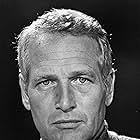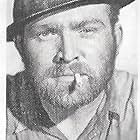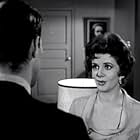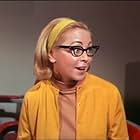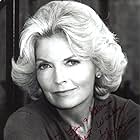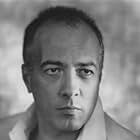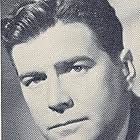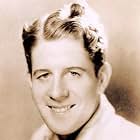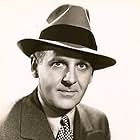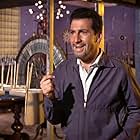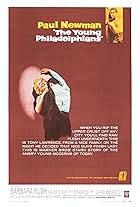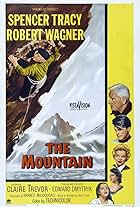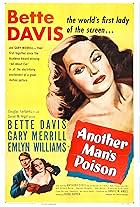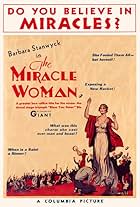VALUTAZIONE IMDb
6,3/10
883
LA TUA VALUTAZIONE
Aggiungi una trama nella tua linguaTorch singer Helen Morgan rises from sordid beginnings to fame and fortune only to lose it all to alcohol and poor personal choices.Torch singer Helen Morgan rises from sordid beginnings to fame and fortune only to lose it all to alcohol and poor personal choices.Torch singer Helen Morgan rises from sordid beginnings to fame and fortune only to lose it all to alcohol and poor personal choices.
- Premi
- 1 candidatura
Nicky Blair
- Vendor
- (scene tagliate)
Trama
Lo sapevi?
- QuizThe title role was declined by two actresses who had recently headlined successful biopics of troubled songstresses: Doris Day (Ruth Etting in Amami o lasciami (1955)) and Susan Hayward (Lillian Roth in Piangerò domani (1955)), neither of whom wanted to repeat a similar earlier role.
- BlooperIn real life, Helen Morgan married three times. In the film, she never marries.
- Citazioni
Larry Maddux: Do yourself a favor. Hire the kid.
Whitey Krause: I hope your hooch is better than your suggestion, Larry. What's the canary to you.
Larry Maddux: Nuthin'. I'm just a music lover. Besides, I don't go for that sad stuff she sings.
- ConnessioniFeatured in The Great Canadian Supercut (2017)
- Colonne sonoreCan't Help Lovin' Dat Man
Music by Jerome Kern
Lyrics by Oscar Hammerstein II
Performed by Ann Blyth (dubbed by Gogi Grant) at the end
Originally from the musical "Show Boat"
Recensione in evidenza
If there was any reason to make a motion picture about the life of legendary performer Helen Morgan it would have been to highlight her distinctness, a style both as an actress and as a singer which set her apart. A tremulous soprano whose emotions were so close to the surface that she often seemed to be breaking into a sob, she could also deliver powerful dramatic fireworks as in the 1929 classic early talkie "Applause." Ann Blyth in the title role does a good job of lip-syncing Gogi Grant's voice on the soundtrack, but Grant's strong rich tones barely suggest the Morgan sound. Also, Blythe is too spunky and hard-edged for the soft, sweet, shy, sensitive person she is playing. Even in her prime Morgan looked wan and somewhat dissipated.
The tedious plot, largely invented, is an indifferently assembled heap of clichés, none of which give insight into how Morgan developed the alcohol habit that figures so powerfully in her life journey. There are four screenwriting credits. At one point Morgan, out of nowhere, reminisces about a childhood bout with scarlet fever and a traumatic episode involving her father. Perhaps those lines were leftovers from a plot layer from one of the writers that was otherwise abandoned.
Paul Newman, still in phase one of his illustrious screen career, is a strong presence but cannot give substance to the sketchily written character of Morgan's (fictional) caddish off-and-on lover. Because the central story is so barren, it's up to the supporting players to keep the viewer's interest. Cara Williams steals the show in the opening scenes as a high-spirited fellow show biz wannabe and Alan King has some effective bits as the second banana to Newman, but later both King and Williams are relegated to supportive wisecracks. Walter Winchell and Rudy Vallee, who operated in the same stomping grounds as Morgan back in the day, play themselves in extended cameos.
Like other 1950s biopics about beloved show biz figures of the Roaring Twenties and Depressed Thirties, the era in question is haphazardly or anachronistically represented in musical arrangements, set design, costuming and, most glaringly, hair styles. The general impression one gets from this bloated but empty effort is that of a large mug of weak tea sweetened with saccharine.
The tedious plot, largely invented, is an indifferently assembled heap of clichés, none of which give insight into how Morgan developed the alcohol habit that figures so powerfully in her life journey. There are four screenwriting credits. At one point Morgan, out of nowhere, reminisces about a childhood bout with scarlet fever and a traumatic episode involving her father. Perhaps those lines were leftovers from a plot layer from one of the writers that was otherwise abandoned.
Paul Newman, still in phase one of his illustrious screen career, is a strong presence but cannot give substance to the sketchily written character of Morgan's (fictional) caddish off-and-on lover. Because the central story is so barren, it's up to the supporting players to keep the viewer's interest. Cara Williams steals the show in the opening scenes as a high-spirited fellow show biz wannabe and Alan King has some effective bits as the second banana to Newman, but later both King and Williams are relegated to supportive wisecracks. Walter Winchell and Rudy Vallee, who operated in the same stomping grounds as Morgan back in the day, play themselves in extended cameos.
Like other 1950s biopics about beloved show biz figures of the Roaring Twenties and Depressed Thirties, the era in question is haphazardly or anachronistically represented in musical arrangements, set design, costuming and, most glaringly, hair styles. The general impression one gets from this bloated but empty effort is that of a large mug of weak tea sweetened with saccharine.
I più visti
Accedi per valutare e creare un elenco di titoli salvati per ottenere consigli personalizzati
- How long is The Helen Morgan Story?Powered by Alexa
Dettagli
- Data di uscita
- Paese di origine
- Lingua
- Celebre anche come
- The Helen Morgan Story
- Luoghi delle riprese
- Azienda produttrice
- Vedi altri crediti dell’azienda su IMDbPro
- Tempo di esecuzione1 ora 58 minuti
- Colore
- Proporzioni
- 2.35 : 1
Contribuisci a questa pagina
Suggerisci una modifica o aggiungi i contenuti mancanti

Divario superiore
By what name was Quando l'amore è romanzo (1957) officially released in Canada in English?
Rispondi







